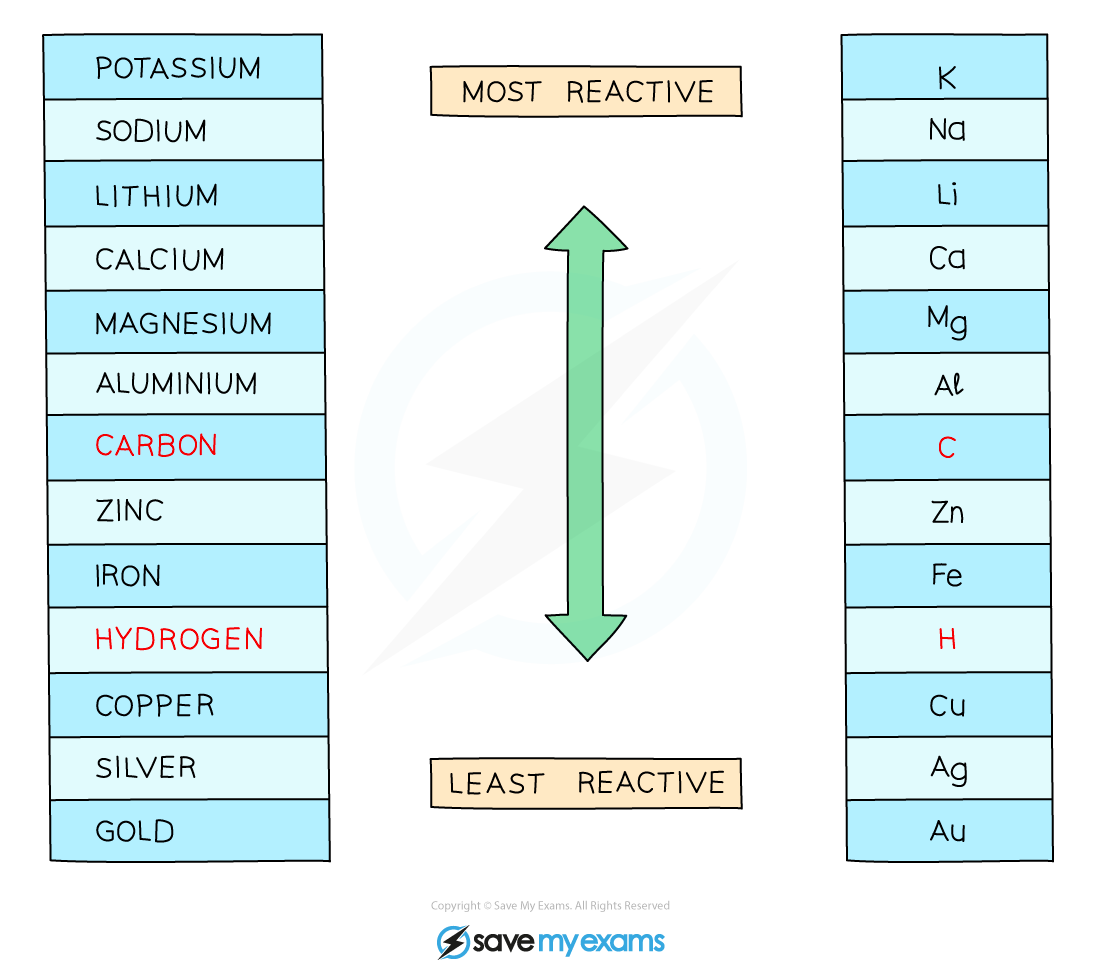Electrolysis of Aqueous Solutions (WJEC GCSE Chemistry): Revision Note
Exam code: 3410
Electrolysis of Aqueous Solutions
What is formed at the anode and cathode
Aqueous solutions will always have water present
Some water molecules split up into hydrogen and hydroxide ions, H+ and OH–, which participate in the electrolysis reactions
H2O (l) H+ (aq) + OH– (aq)
Products at the anode
Negatively charged ions are attracted to the positive electrode, the anode
When the aqueous electrolyte undergoes electrolysis, the OH– and any other negative ions (e.g. Cl–, Br–) in solution are attracted to the anode and they will lose electrons (be oxidised)
E.g. 2Cl– → Cl2 + 2e–
Products at the cathode
Positively charged ions are attracted to the negative electrode, the cathode
When the aqueous electrolyte undergoes electrolysis, the H+ and any other positive ions (e.g. Cu2+, Ag+) in solution are attracted to the anode and they will gain electrons (be reduced)
Only metals that are below hydrogen in the reactivity series will form at the cathode
Cu2+ + 2e– → Cu
Table of products when solutions undergo electrolysis
Solution | Product at anode | Product at cathode |
|---|---|---|
copper(II) chloride | chlorine gas | copper |
sodium bromide | bromine gas | hydrogen gas |
Gases formed at the anode and cathode are collected using inverted test tubes
Collecting gases formed in electrolysis

The gases are collected using the inverted test tubes are filled with water. The gases will displace the water
Competing Ions
Higher Tier
Rules for identifying products formed at electrodes
Positive Electrode - Anode
Negatively charged OH– ions and non-metal ions are attracted to the positive electrode
If halide ions (Cl-, Br-, I-) and OH- are present then the halide ion is discharged at the anode, loses electrons and forms a halogen (chlorine, bromine or iodine)
If no halide ions are present, then OH- is discharged at the anode, loses electrons and forms oxygen gas
In both cases, the other negative ion remains in solution
Negative Electrode - Cathode
H+ ions and metal ions are attracted to the negative electrode but only one will gain electrons
Either hydrogen or a metal will be produced
If the metal is above hydrogen in reactivity series, hydrogen will be produced – bubbling will be seen at the cathode
The reactivity series

The reactivity series of metals enables chemists to predict the products at the cathode in the electrolysis of aqueous solutions
Using Named Electrolytes
The products at the electrodes from solutions of copper chloride and sodium chloride
The Products of Electrolysing Aqueous Solutions
Aqueous solution | Ions present | Equation at anode | Equation at cathode |
|---|---|---|---|
Sodium chloride, NaCl | H+, OH– , Na+, Cl– | 2Cl– (aq) → Cl2 (g) + 2e– | 2H+ + 2e– → H2 (g) |
Copper(II) chloride, CuCl2 | H+, OH– , Cu2+, Cl– | 2Cl– (aq) → Cl2 (g) + 2e– | Cu2+ (aq) + 2e– → Cu (s) |
Explaining the products:
Copper chloride:
Copper is below hydrogen so copper(II) ions are preferentially discharged at the cathode; chlorine is a halogen, so is preferentially discharged at the anode
Sodium chloride:
Sodium is above hydrogen so hydrogen ions are preferentially discharged at the cathode; chlorine is a halogen, so is preferentially discharged at the anode
Examiner Tips and Tricks
You are not expected to know the products at the anode if nitrate or sulfate solutions are used as the electrolyte.

You've read 0 of your 5 free revision notes this week
Unlock more, it's free!
Did this page help you?